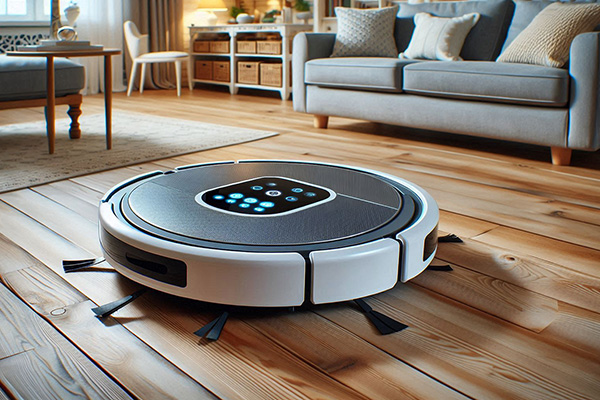A reliable and fast internet connection is essential in today’s connected world. One of the best ways to achieve seamless internet coverage throughout your home or office is by setting up a best robot vacuum cleaner and mop system. Mesh WiFi systems are designed to eliminate dead zones and provide consistent WiFi signals across large areas. If you’re considering upgrading to a best robot vacuum and mop system, here’s a step-by-step guide to help you set it up for optimal performance.
What is Mesh WiFi?
Before we dive into the setup process, let’s quickly define what a mesh WiFi system is. Unlike traditional routers, which broadcast a single WiFi signal throughout your home, a mesh WiFi system uses multiple nodes (or units) that work together to create a unified network. These nodes communicate with each other, ensuring that you receive a strong and reliable WiFi signal in every corner of your space.
1. Choose the Right Mesh WiFi System for Your Needs
Not all mesh WiFi systems are created equal. When selecting a system, consider factors such as your home size, internet speed requirements, and the number of devices that will connect to the network. Some systems are specifically designed for large homes, while others may be more suited for smaller spaces.
For example, if you’re looking for a mesh WiFi system with great coverage and additional features, check out options like the ones offered on CCTV Wise, which includes systems with easy installation and enhanced performance features.
2. Find the Best Location for the Primary Router
The first step in setting up your mesh WiFi system is placing the primary router. This router should be connected to your modem and placed in a central location within your home. Try to avoid placing it near thick walls, metal objects, or microwaves, as these can interfere with the signal.
The goal is to place the primary router in a location where it can distribute the signal effectively to all parts of your home. A well-placed router will make the entire network perform optimally.
3. Position the Mesh Nodes Strategically
Once the primary router is in place, it’s time to position the additional mesh nodes (or satellites). The placement of these nodes is crucial to maintaining a strong, seamless signal.
- Ideal Placement: Start by placing the first node about halfway between the primary router and the farthest point of your home where you need coverage.
- Avoid Obstructions: Ensure that the nodes are not obstructed by walls, floors, or large objects. If the nodes cannot communicate with each other properly, the performance of your mesh WiFi network will suffer.
- Experiment: Don’t hesitate to move the nodes around to find the best location. Some systems allow you to monitor signal strength, so you can optimize placement for the best coverage.
4. Use a Wired Backhaul for Better Performance
Most mesh WiFi systems support both wireless and wired backhaul. A wired backhaul means connecting your mesh nodes via Ethernet cables for faster, more reliable communication between them. If possible, use wired backhaul to improve your network’s performance, especially in larger homes or if you have multiple devices streaming high-bandwidth content.
5. Optimize Your WiFi Settings
After your mesh WiFi system is installed, it’s time to fine-tune the settings. Here are a few key tips to improve performance:
- Use the Right Channel: Most mesh WiFi systems automatically select the best channel for your network, but you can manually adjust the WiFi channel if needed. Experiment with different channels to avoid interference from neighboring networks.
- Enable Quality of Service (QoS): Some systems allow you to prioritize certain types of traffic, like video streaming or gaming, to ensure a smoother experience. Enable QoS settings to manage bandwidth and ensure high-priority tasks have enough resources.
- Enable Dual-Band WiFi: Many mesh WiFi systems offer both 2.4 GHz and 5 GHz bands. The 5 GHz band is faster and less crowded, so use it for devices that require high speeds, while the 2.4 GHz band is better for devices further from the router or for basic browsing.
6. Regularly Update Firmware
To ensure your mesh WiFi system runs at peak performance, keep the firmware up to date. Manufacturers often release updates to improve performance, security, and stability. Many systems allow you to enable automatic updates, so you never miss out on improvements.
7. Test and Monitor Your Network
Once you have your mesh WiFi system set up, it’s important to regularly test your network’s performance. Use apps or built-in tools to check the signal strength in different areas of your home. This will help you identify any weak spots and adjust the placement of your mesh nodes accordingly.
Monitoring the network’s performance will also help you spot issues such as slow speeds or dropped connections, which can often be solved by tweaking your setup.
Conclusion
Setting up a mesh WiFi system doesn’t have to be difficult, and with the right placement, optimization, and regular maintenance, you can enjoy fast and reliable WiFi coverage throughout your entire home or office. Whether you’re streaming, gaming, or working from home, a well-configured mesh WiFi system ensures that you have a seamless and consistent internet experience.
Ready to upgrade your WiFi experience? Visit CCTV Wise for top-quality mesh WiFi systems that can provide optimal performance for your home.
By following these tips, you’ll be on your way to achieving the best WiFi performance possible, no matter the size or layout of your space.
